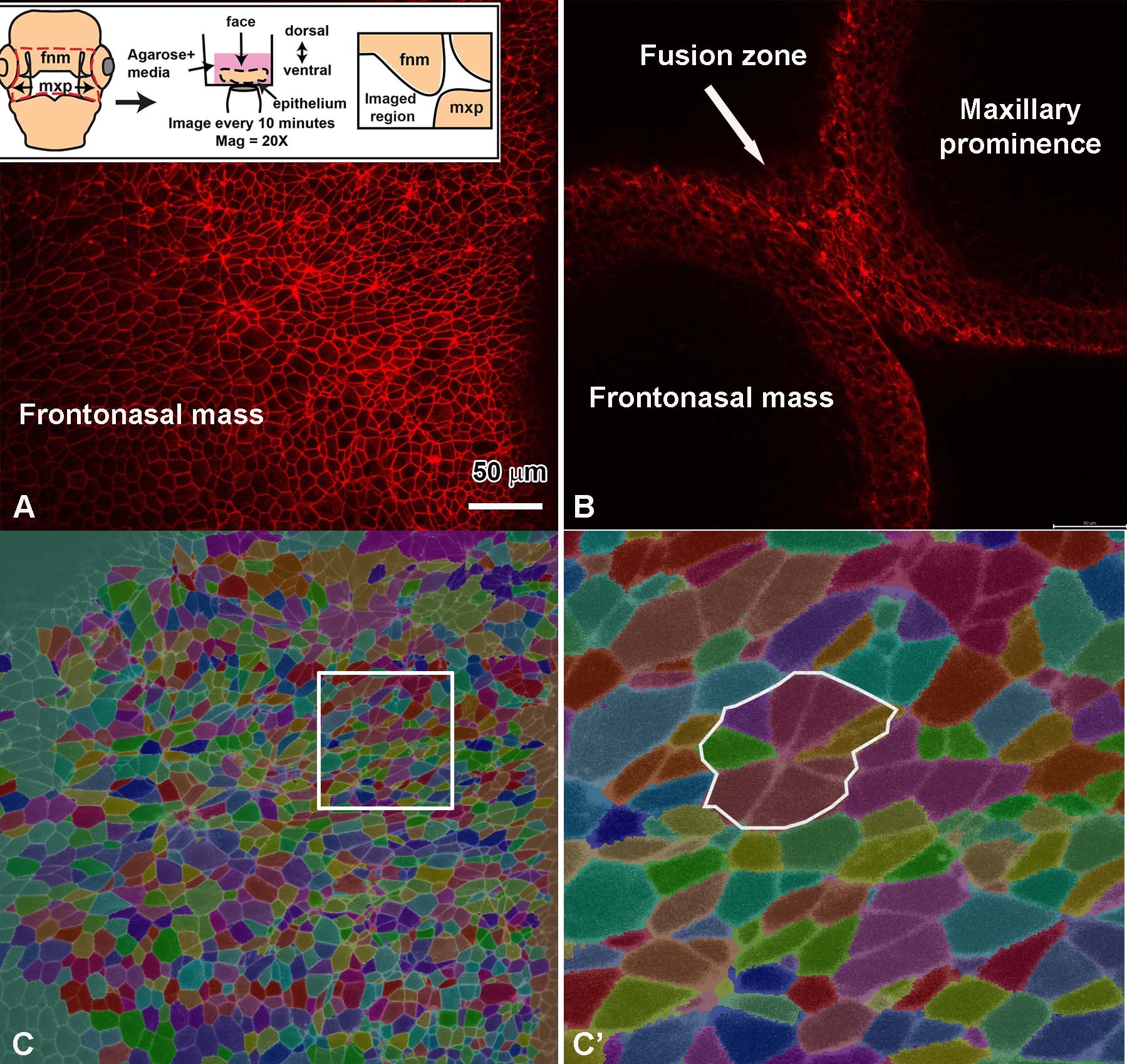IADR Abstract Archives
Visualizing Epithelial Rearrangements During Avian Lip Fusion in Real-Time
Objectives: Understanding craniofacial development is a prerequisite to preventing serious congenital malformations such as orofacial clefting. The most common subtype is non syndromic cleft lip with or without cleft palate (NSCL/P) that occurs in 1:700 live births. Typical cleft lip is unilateral rather than symmetrically bilateral suggesting that local environmental effects as opposed to genetics are a major cause. Our objective is to image the face and to examine the role of cell rearrangements in the lip fusion process.
Methods: Face organ cultures from E 4.5 chicken embryos were incubated in a stain which fluorescently labels polymerized/filamentous actin (F-actin). The organ cultures were then transferred to 0.6% agarose/live media mix in multichambered slides. Time lapse imaging was carried out with an inverted confocal microscope in an environmental chamber. Images were captured every 10 minutes for 5-8 hours. Cell rosettes and vertices were identified using the Morphological Segmentation plugin in ImageJ and tracked over time to identify patterns in the cellular rearrangements.
Results: Scans of both the surface epithelia and the fusion zone between the frontonasal mass and maxillary prominences showed hexagonal cells arranged in rosettes. Over time, the rosettes lost their organization around a central cell and became elongated. In addition, the epithelial cells developed processes that budded off fragments of cell membrane. At deeper levels, epithelial cells flattened and merged in areas of contact in the fusion zone. The elongation of multi-cellular rosette formations as well as the reduction in width of the epithelial seam suggests that cellular intercalation is a major mechanism during fusion.
Conclusions: The dynamic changes in epithelial structure near the fusion zone identifies key areas of rearrangement that may be susceptible to environmental perturbations. Future studies will investigate the regional effects of inhibition of actinomyosin contractility on lip fusion.
Methods: Face organ cultures from E 4.5 chicken embryos were incubated in a stain which fluorescently labels polymerized/filamentous actin (F-actin). The organ cultures were then transferred to 0.6% agarose/live media mix in multichambered slides. Time lapse imaging was carried out with an inverted confocal microscope in an environmental chamber. Images were captured every 10 minutes for 5-8 hours. Cell rosettes and vertices were identified using the Morphological Segmentation plugin in ImageJ and tracked over time to identify patterns in the cellular rearrangements.
Results: Scans of both the surface epithelia and the fusion zone between the frontonasal mass and maxillary prominences showed hexagonal cells arranged in rosettes. Over time, the rosettes lost their organization around a central cell and became elongated. In addition, the epithelial cells developed processes that budded off fragments of cell membrane. At deeper levels, epithelial cells flattened and merged in areas of contact in the fusion zone. The elongation of multi-cellular rosette formations as well as the reduction in width of the epithelial seam suggests that cellular intercalation is a major mechanism during fusion.
Conclusions: The dynamic changes in epithelial structure near the fusion zone identifies key areas of rearrangement that may be susceptible to environmental perturbations. Future studies will investigate the regional effects of inhibition of actinomyosin contractility on lip fusion.

